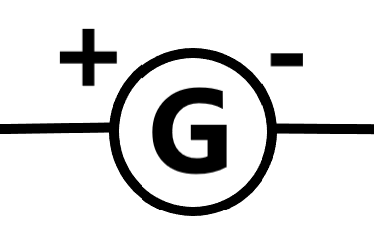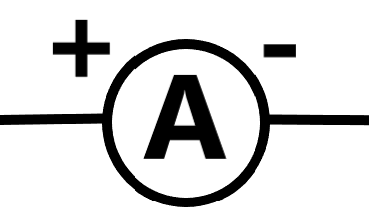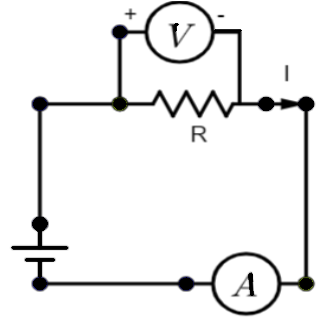
Write the symbol and function of the following terms:
(i) Galvanometer
(ii) Ammeter
State Ohm’s law. How are the potential difference V, current I, and the resistance R related?
Answer
554.1k+ views
Hint: We need to understand the given devices and explain their functions in a circuit. We know that the potential difference V, current I and resistance R are related directly, which is given by Ohm's law which states and explains completely.
Complete step-by-step solution:
The instruments given to us are the galvanometer and the ammeter. These are used in a circuit to analyze the physical property involved in the electric circuits.
Galvanometer: It is the instrument used to detect any current in the circuit. It deflects from its mean position denoting any flow of electric charges. The direction of deflection indicates the direction of current flow. It gives very little data on the amount of current flow. It is represented in a circuit as –

Ammeter: It is the device used in measuring the current in a circuit. It gives the amount of current flow in the electric circuit. It has to be connected in series to the circuit to get the value of the current involved. It is represented in a circuit as –

Ohm’s law: The law states that the current flowing through a resistor is directly proportional to the potential difference across the resistance. Let us consider a circuit as given below.

A potential drop V across the resistance R is noted for a current of I. The relation between these is given as
\[\begin{align}
& V\propto I \\
& V=IR \\
\end{align}\]
Where, $R$ is the constant of proportionality, which is the resistance.
Thus, all the parameters are related to each other.
Note: The relation between the current and potential drop across the resistor can be derived only in the case of resistors. The other elements in a circuit give a complex relationship as most of them have phase changes between the current and potential drop.
Complete step-by-step solution:
The instruments given to us are the galvanometer and the ammeter. These are used in a circuit to analyze the physical property involved in the electric circuits.
Galvanometer: It is the instrument used to detect any current in the circuit. It deflects from its mean position denoting any flow of electric charges. The direction of deflection indicates the direction of current flow. It gives very little data on the amount of current flow. It is represented in a circuit as –

Ammeter: It is the device used in measuring the current in a circuit. It gives the amount of current flow in the electric circuit. It has to be connected in series to the circuit to get the value of the current involved. It is represented in a circuit as –

Ohm’s law: The law states that the current flowing through a resistor is directly proportional to the potential difference across the resistance. Let us consider a circuit as given below.

A potential drop V across the resistance R is noted for a current of I. The relation between these is given as
\[\begin{align}
& V\propto I \\
& V=IR \\
\end{align}\]
Where, $R$ is the constant of proportionality, which is the resistance.
Thus, all the parameters are related to each other.
Note: The relation between the current and potential drop across the resistor can be derived only in the case of resistors. The other elements in a circuit give a complex relationship as most of them have phase changes between the current and potential drop.
Recently Updated Pages
Master Class 12 Business Studies: Engaging Questions & Answers for Success

Master Class 12 Economics: Engaging Questions & Answers for Success

Master Class 12 English: Engaging Questions & Answers for Success

Master Class 12 Maths: Engaging Questions & Answers for Success

Master Class 12 Social Science: Engaging Questions & Answers for Success

Master Class 12 Chemistry: Engaging Questions & Answers for Success

Trending doubts
What are the major means of transport Explain each class 12 social science CBSE

Which are the Top 10 Largest Countries of the World?

Draw a labelled sketch of the human eye class 12 physics CBSE

How much time does it take to bleed after eating p class 12 biology CBSE

Explain sex determination in humans with line diag class 12 biology CBSE

Differentiate between homogeneous and heterogeneous class 12 chemistry CBSE




